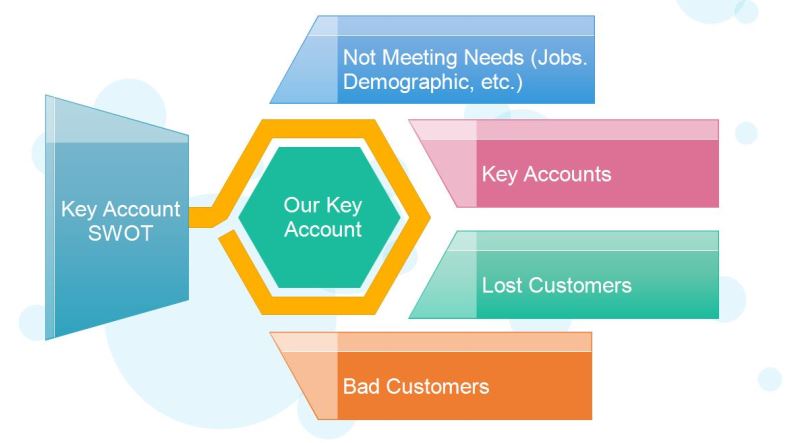When I discuss marketing needs starting with existing customers, I feel sort of pull-back from most people/organizations. They are looking for new markets and that blue ocean type thinking. I do believe that exploring the new customers and markets should certainly be part of any strategy. However, learning from existing customers is the first step in developing a marketing strategy.
I have always encouraged people to do a SWOT Analysis for existing market segments. My SWOT is not the simple 4-block exercise they do in college classes. I have attached a copy. I also recommend doing a SWOT on Key Customer accounts. The importance in that is the ability to understand your customer’s customer. Doing this also helps in forecasting as key trends are identified earlier.
SWOT Analysis Download & Description: Not as easy as you think, A SWOT Analysis
When reviewing existing and past customers, it is not so much about how we marketed towards them or the tools we used to secure them as clients. It is about understanding our customer’s customer.
- What if we understood what jobs they were struggling with?
- What if we understood which markets are existing customers were not serving well?
- Who are the largest customers that may have outgrown using them as an intermediary?
- What about their customers that they would be happy to get rid of?
- What about people that struggled because of certain demographics/offerings?
If your thought is that you cannot take customers away from your existing customers, you are correct. What we are doing is extracting knowledge and learning from it. If we directly take customers away, we need to evaluate and possible, partner or compensate our existing customer database. On the other hand, they may even refer customers to us, ones they do not want to handle. Most importantly though is we use this data to find similar prospects and new customers. It is the knowledge we gain from this exercise that is our first stepping stone to finding new markets.
These are the people/organizations that already recognize they have a need for your services. Creating awareness in a market that does not understand your services or has not used a similar service can be costly both in time and money. You have to educate them. Or, you have to take them away from competitors. As Dan Roam says in his new book, Draw to Win: A Crash Course on How to Lead, Sell, and Innovate With Your Visual Mind:
If you walk through the office talking loudly to yourself, nobody ‘will listen. But if you can enter the conversation that is already going on in your colleague’s head, he or she ‘will pay complete attention and invite you in. That’s always been true.
Is your marketing just talking loudly? Or, is it attempting to have a conversation?
This relates to the concepts of edges that I discuss or what I call the Funnel of Opportunity versus the typical Funnel of Depletion. We start with what is known and work outward, never making a cold call always making a warm call. Always building upon what we know, engaging prospects, exploring new. Doing it this way we can quickly test new ideas, new methods in small groups and build upon the information we receive. To find the edges of existing customers, market segments is again not an intuitive process. It requires a deep understanding of our customer’s markets, not ours.
More information on The Funnel of Opportunity: Building a Lean Marketing Funnel

